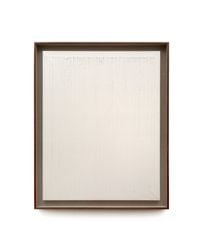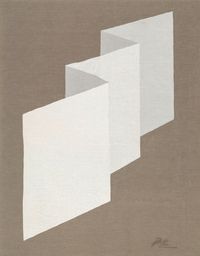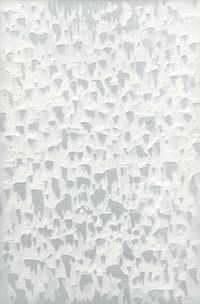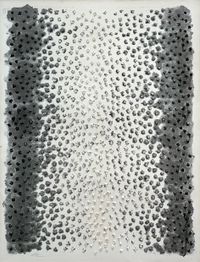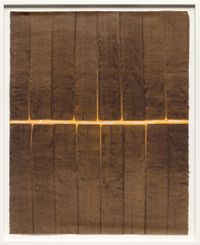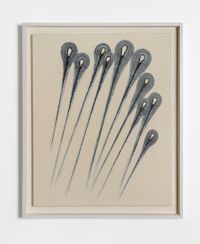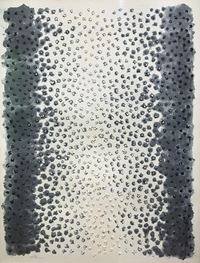Kwon Young-Woo (권영우) was considered a pioneering figure in the development of Dansaekhwa (or the modern monochrome movement), a Korean painting tradition where artists work predominantly with paper. Born in Korea in 1926, Kwon graduated from Seoul National University’s first art school class in 1951 alongside his contemporaries Park No-Soo, Suh Se Ok, Chang Un-Sang, and Park Sae-Won. He died in 2013.
Read MoreThroughout his career, Kwon explored the textural abilities of his chosen medium by scratching, tearing, and layering sheets of hanji (traditional Korean mulberry paper) onto canvas and manipulating the material into three-dimensional relief sculptures which were then decorated with ink painting. Later in his career, Kwon removed any trace of representation and worked solely with white paper.
Kwon’s skill in altering a traditional material to reflect themes of Abstract Expressionism has led to him being recognised as one of Korea’s most groundbreaking artists. Recently, the artist’s works have been exposed to new audiences due to a resurgence in interest of the Dansaekhwa movement.
Kwon Young-Woo has been included in recent exhibitions such as From All Sides: Tansaekhwa on Abstraction at Blum & Poe, Los Angeles (2014); Dansaekhwa at Kukje Gallery, Seoul (2015); When Process Becomes Form: Dansaekhwa and Korean Abstraction at the Boghossian Foundation, Brussels (2016); and Dansaekhwa and Minimalism at Blum & Poe, New York (2016).
In 2007, six years before his death in 2013, Kwon donated 70 of his most important works to the Seoul Museum of Art.
